Brewing up a Tempest - The Witches of East Neuk
First published in the Edinburgh Reporter 20th July 2024
Online Link: The Witches of East Neuk - and plans for a museum - The Edinburgh Reporter
The Witches of Eastwick may have conjured up a storm, but the Witches of East Neuk and indeed throughout Fife and Scotland are creating a tempest, with a revival of calls to posthumously pardon those innocent people who were accused, tortured and executed for witchcraft during the 16-18th centuries.

18th Century Engraving Pittenweem Harbour - Courtesy Leonard Low
Royal Turbulence
For those who don’t know, storms were the catalyst for witch hunting and persecution in Scotland, when King James VI of Scotland and I of England’s attempts to transport his new wife, Anne of Denmark to Scotland were thwarted by tempests during her voyage. Once safely installed in her new country, the Danish Minister faced Royal accusations of cutting corners in the creation of the ship that carried Queen Anne, causing it to be unstable. He in turn denied any culpability, pointing the finger, instead, at ‘witches’ for sending imps and creating the storms.
Witchcraft Legislation
From that point on, James VI took a great interest in witchcraft, publishing his own book on the subject, Daeomonologie in Forme of a Dialogue, published in 1604. Witchcraft was already a crime punishable by death in England under the 1542 Witchcraft Act passed during the reign of Henry VIII. Mary Queen of Scots, James VI’s mother, passed legislation for Scotland in 1563 resulting in 150 years of witch-hunting and persecution when practising witchcraft or consulting a witch was outlawed.
2,500 Executed for Witchcraft in Scotland
Until the Witchcraft Act was repealed in Scotland by new legislation in 1736, four thousand Scots, mainly women were accused of witchcraft, with 2,500 of those convicted and executed.
Those accused of witchcraft were often victimised for their differences, such as learning difficulties, disabilities, or because they had knowledge of herbalism and basic medicine. While people relied on them to help with medical conditions for humans and animals, one false word, apparent curse or grumpiness could lead to the belief that these ‘wyse’ women (although some could be men) were turning their powers against victims to cause harm, rather than good. People believed that their knowledge was magic, rather than any natural understanding of how to use plants and herbs for healing and cure.
Such persecutions were not, of course, confined to Scotland. Between 1692 and 1693, the town of Salem in Massachusetts famously executed 19 people by hanging following the accusation of 200 people for practising witchcraft.
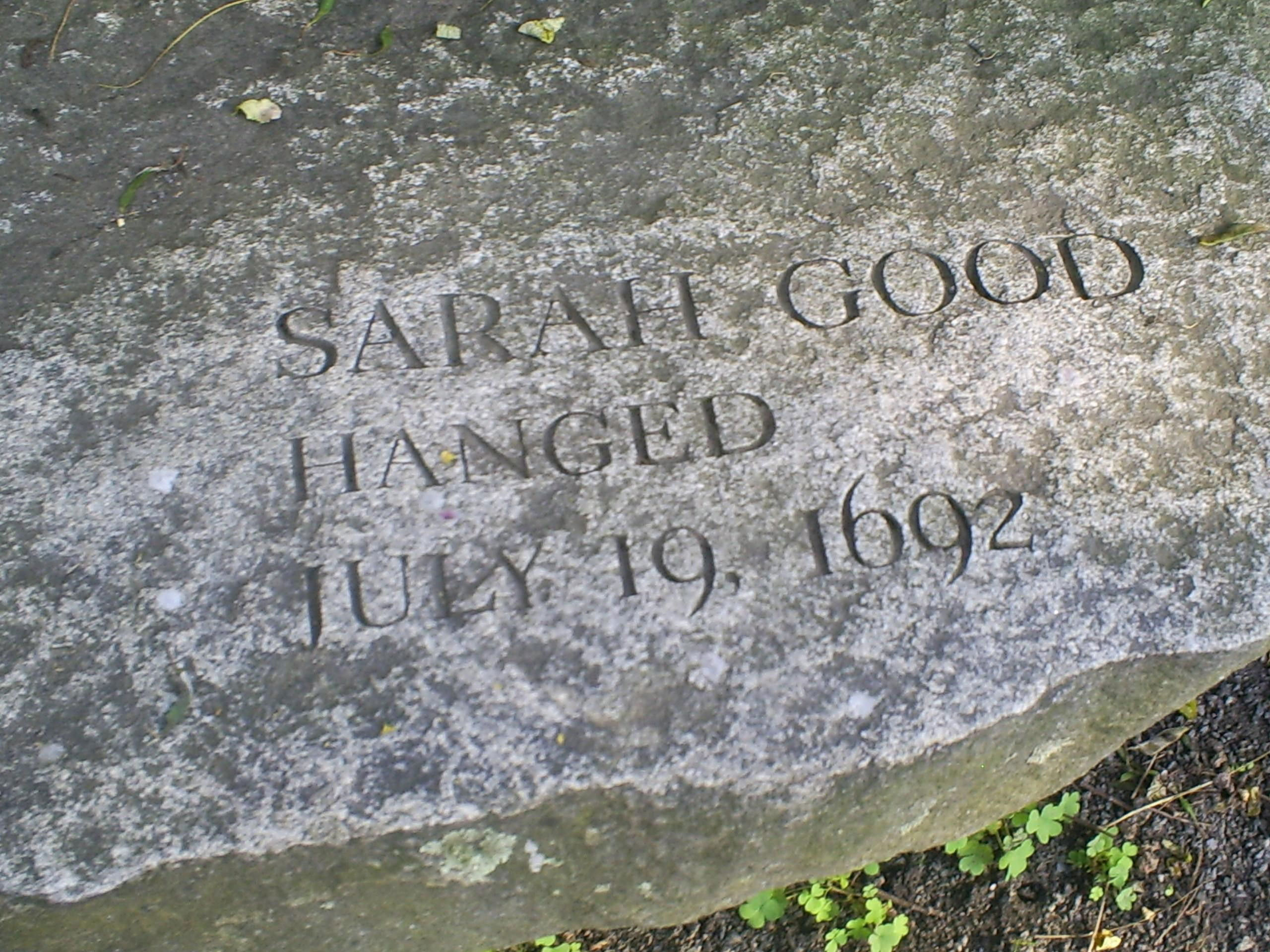
Gravestone Sarah Good, Salem, Massachusetts (Author's own picture)
Witch Executions in England and Wales
England sent around 1,000 people to their death for witchcraft between 1542 and 1736 but astonishingly, it seems that only 5 were executed in Wales. Why this is the case isn’t entirely clear, but author Phil Carradice has suggested that the Welsh valued, and were more reliant upon the local wyse women who were accepted in the community for helping people and animals with their potions, ointments and charms. There may have been another entirely practical reason for the lack of convictions in Wales – apparently, few judge or examiners spoke the Welsh language, thereby making interrogation impossible.
In an unexpected turn of events, however, during the seventeenth century, Sir George Mackenzie, Lord Advocate for Scotland, proved to have more sympathy with those accused of witchcraft than he did with the Covenanters he persecuted and incarcerated in Greyfriars Kirkyard, Edinburgh. Although he appears to have believed in the powers of the Devil to inflict harm and, in some cases, cure diseases, he was reluctant to accept that those accused of witchcraft had necessarily made a pact with the Devil. Although willing to allow torture of the Covenanters, he was instrumental in the decline of witchcraft trials in Scotland, criticising judicial practices against the accused and the use of torture, such as ‘witch pricking’ to extract confessions from them.
The Pittenweem Witches
Whilst researching my children’s book, PJ and the Paranormal Pursuers – The Phantoms of Pittenweem, the parallels in accusations of witchcraft between Salem and Pittenweem were evident. In the former, a group of girls and young women demonstrated horrific afflictions which they claimed had been caused by witchcraft by others in the town. Similarly, in Pittenweem, a young apprentice blacksmith, Patrick Morton, crossed swords with a customer, Beatrix Laing, whose order for nails he refused to expedite, resulting in an angry exchange, during which Ms Laing threatened him. He returned home to find a bucket of water and some burning coals outside his house, a sign of a curse. Morton immediately became ill after this discovery and was unable to stand or walk. He suffered convulsions in which his body became rigid and twisted, his stomach allegedly distended, and he developed marks which people said resembled pinches from fingernails.
The townsfolk quickly decided that witchcraft was afoot and laid the blame on Beatrix Laing. Morton claimed to have seen other local people around his bed, cursing him and claiming to be witches and from there, a horrific period of persecution, torture and execution ensued. Possibly the most dreadful story is that of Janet Cornfoot who was returned to custody after escaping the Pittenweem Tolbooth and was subsequently hunted down by a lynch mob, subjected to near drowning, and stoned until she was finally crushed to death before being driven over by a horse and cart several times.

Tolbooth, Pittenweem - Jacqui Dempster
In both Salem and Pittenweem, there may have been logical reasons for the apparent sickness and behaviour of the accusers, including mass hysteria or convulsive ergotism (caused by eating grains or rye infected with fungus). Nevertheless, due to lack of knowledge of such things, all were attributed to witchcraft.
A Profitable Business I
n Pittenweem, more nefarious reasons may have been present. The local Minister, the Revd. Patrick Couper, a friend of Morton’s family, had been distributing leaflets about witchcraft, exposing the young lad to tales of witchcraft and devil worship.
The Church had become wary of the Protestant Reformation and the 1563 Witchcraft Act made it a crime to use herbs as medicine as it was a pagan celtic tradition. Failure to attend church was evidence of witchcraft and, most strikingly of all, those women successfully prosecuted were prevented from claiming new rights in terms of property and land ownership that had resulted under the Reformation. Indeed, to find someone guilty of witchcraft allowed the local authorities or the Church to claim the property of those so condemned.
There were, therefore, ulterior motives in stoking up fear of witchcraft in those turbulent times. Indeed, Patrick Morton was described as having blatantly lied about the Pittenweem ‘witches’ by the Edinburgh Courts. The Scottish High Court in fact, released Janet Cornfoot back to Pittenweem due to its disagreement with the local proceedings, an action which sadly led to her horrific demise when she was re-arrested in Fife.
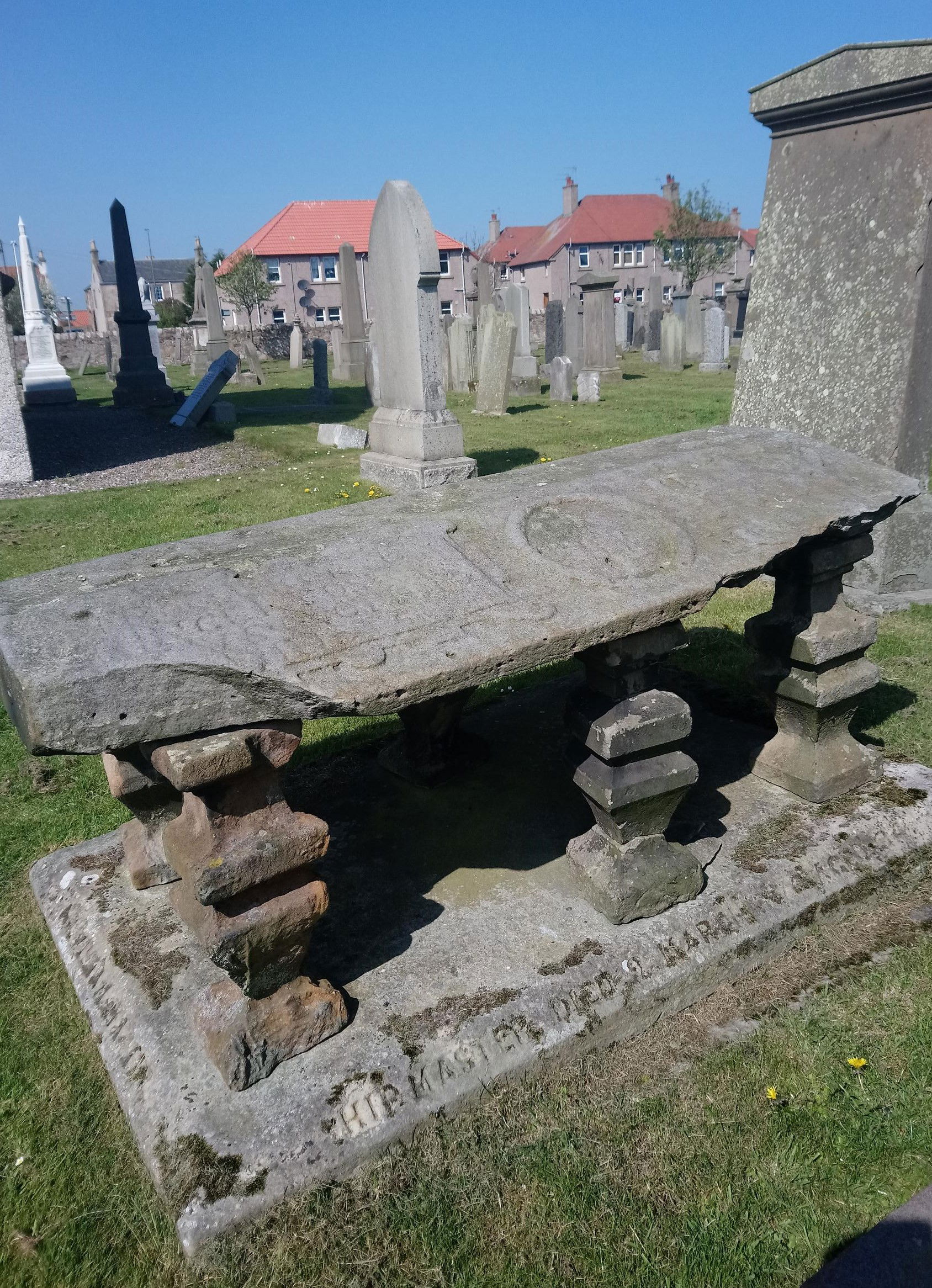
Horsburgh Family Grave - Janet Horsburgh was accused of witchcraft during the Pittenweem Witch Trials (Jacqui Dempster)
While the witch trials may be attributable to considerable misogyny, given most victims were female, there was undoubtedly a huge benefit in the ability of the state and Church to divest any property owners of their worldly goods. In fact, families of those condemned to execution were even heavily charged for the services of arranging the burning of alleged witches and disposal arrangements. Pittenweem itself had lost its men to war resulting in pecuniary losses and in addition to the seizing of property to add to the town coffers, the spectacle of trials and executions brought tourism and money to its economy.
In Memory of the Victims
It is little wonder, therefore, that in more enlightened times, there are those who feel that history should be recognised and those innocent, brutalised victims should be remembered with more than lip service.
Amongst those who have tried to memorialise the victims are Leonard Low, author, historian, and expert on Scottish Witches. He is a descendant of two women on his mother’s side, one who was burnt and the other who died accused of witchcraft. He is a passionate campaigner and advocate for a memorial to be created. The local council initially welcomed his suggestion to place it on Council land, on a cliff path popular with tourists. Sadly, however, he explained that the Pittenweem Community Council rejected the idea.
The Furore of the Larachmhor Mural
More recently, there has been something of a furore after the owner of the Larachmhor Tavern in Pittenweem commissioned a street artist of the Banksy ilk to paint the mural of a witch on the side of his pub. The witch is depicted stereotypically as a ‘pointed-nosed hag’, resplendent with wizened features and toothless gums. Her long-fingered hand is threateningly poised at all who gaze at her as she stares out from the side street, haloed by a glowing harvest moon. It has been suggested that the mural is too cartoon inspired and is derogatory to the memory of the innocent persecuted women of Pittenweem. Although it is certainly caricature and unmistakably raises the inference of witchcraft, it might be argued that the features could easily have resembled those of an older lady of the time who may well have been seen as frightening and accused of witchcraft.
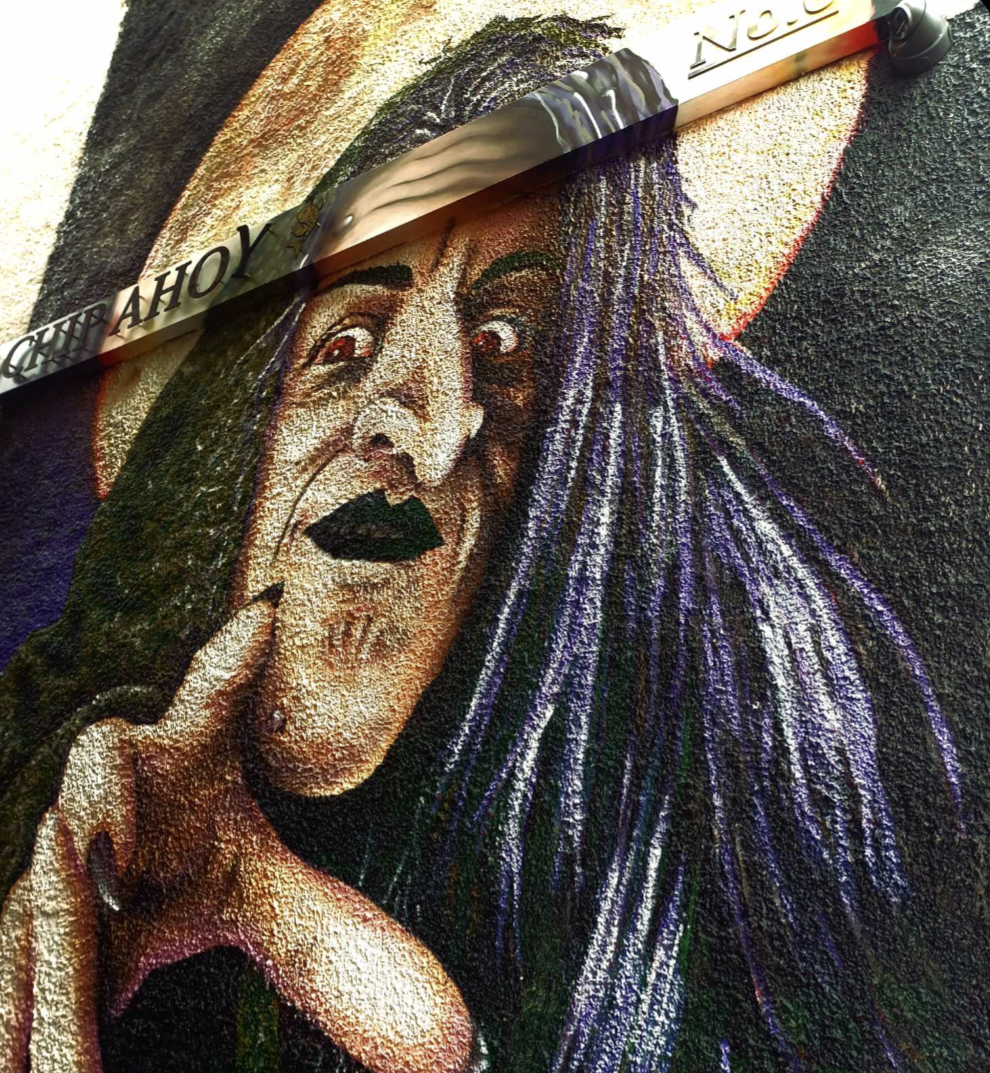
The Controversial Larachmhor Mural by Rogue-One (Courtesy of Leonard Low)
Following thirteen complaints, and accusations that it raised “historically inaccurate false narratives,” not in keeping with the village’s conservation area, Leonard explained that Fife Council ordered Alan Adey, the landlord of the Larachmhor Tavern to remove the mural as it did not have planning permission. Although retrospective planning was applied for, it was rejected. Mr Adey was served with enforcement action to remove it.
The mural, described as ‘gaudy and inaccurate’ by local counsellors became the subject of further appeals, finally to the Scottish Government, with Leonard Low expressing his opposition to its removal. He argues that it brings tourism to the town and helps its economy and reminds us of Pittenweem’s history, which, however horrific, isn’t something that can be erased. If the mural had just been of an ordinary looking woman, he argues, the purpose of it wouldn’t be recognised. Leonard believes that the mural isn’t there to ridicule those who perished, an idea which he reviles, given his own ancestry, but to remember and recognise the perceptions that people held in those days.
Expression of Art or Commercialism?
There are, of course, those who support the mural as a work of art, expression of which, they believe, should not be crushed. Others, however, feel that such expression should be more compassionate and sensitive, particularly in an area where descendants of those persecuted in the witch trials still reside.
There are merits on both sides of the argument, it might be said. In Salem, Massachusetts, the entire atmosphere is one of ‘Witch Town’ where the history of witch persecution is overshadowed by shops selling magickal ephemera, offering Tarot readings, all year-round Hallowe’en decorations with witches on broomsticks hanging outside every doorway, and waxwork exhibitions depicting the events. It is fair to say that trials of Salem are somewhat lost in the ruthlessly commercial streets of the town and are only preserved in the historical areas where you can see the Jonathan Corwin House (The Witch House), home of the judge who presided over the witch trials. There is the Old Burying Point Cemetery, Salem Jail, Salem Courthouse, and the Execution Site on Gallows Hill where 19 innocent people were hanged for witchcraft.
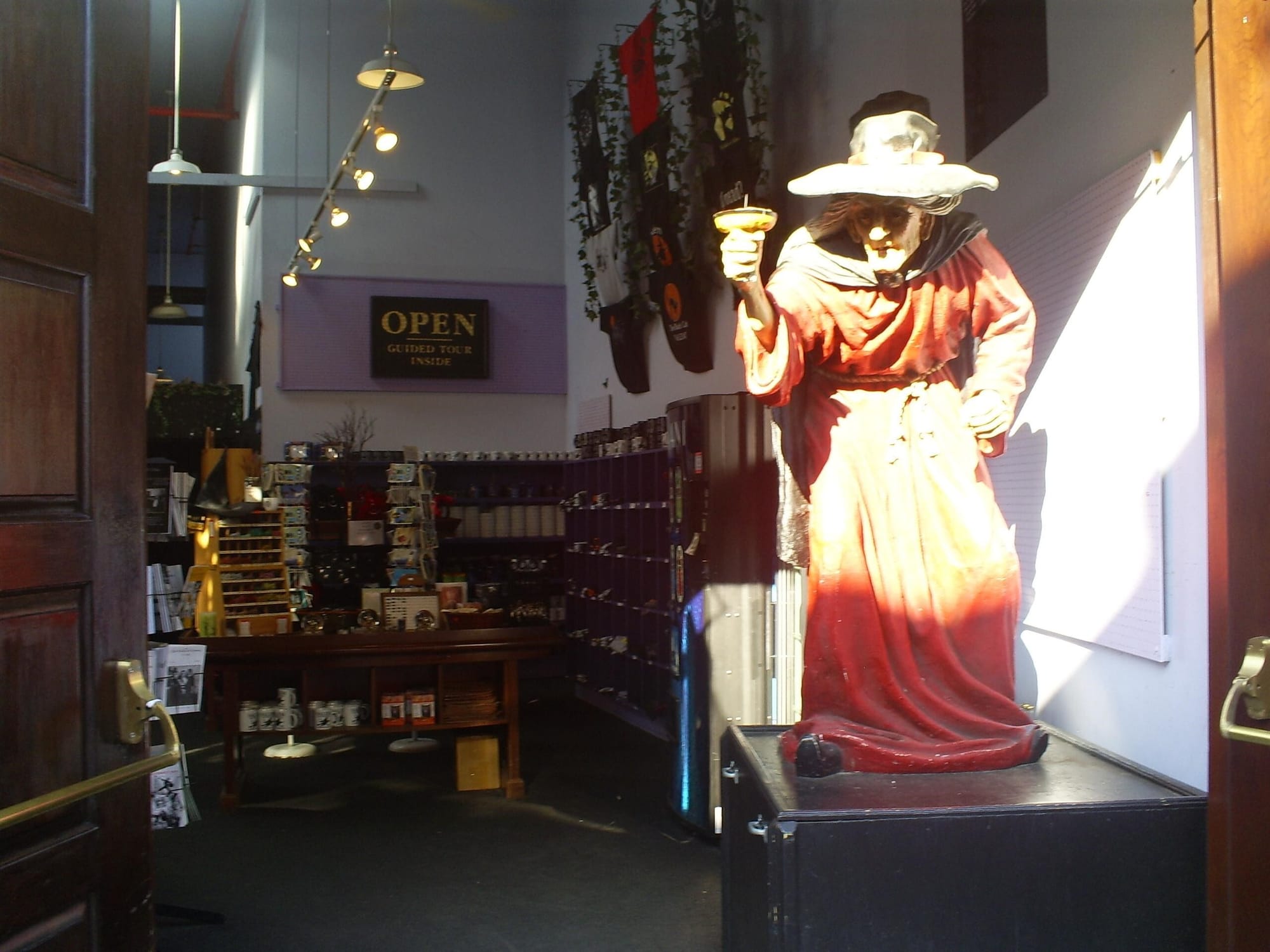 | 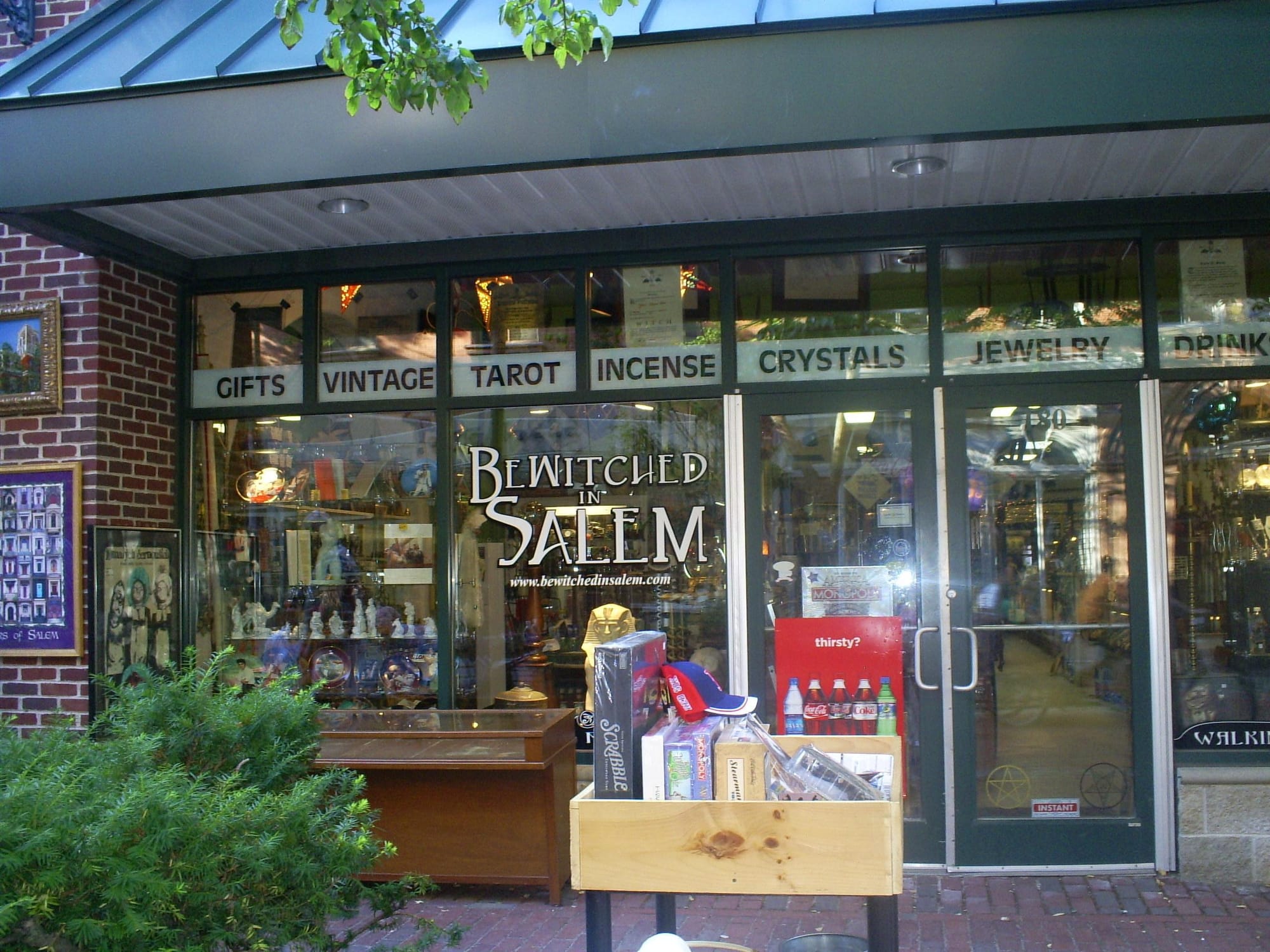 |
Witchcraft Stores in Salem, Massachusetts (Jacqui Dempster)
It's hard to disagree that some balance between history and kitsch commercialism is desirable and that as long as it doesn’t get out of hand, the odd artwork by a well-known artist (‘Rogue-one’, allegedly a friend of Banksy) might not be so terrible if taken in the context and spirit it was created. Love it or hate it, the fight continues to retain the Pittenweem Witch Mural, and, Leonard Low, at least hasn’t given up the fight.
Scottish Witch Trial Museum

The Scottish Witch Museum, Curated by Leonard Low, now open in Leven, Fife (2 Mitchell Street, Leven) (Courtesy of Leonard Low).
Whether successful or not in his battle in the name of art, Leonard Low is planning to thwart the rejections of the past in terms of remembering Pittenweem’s witch trials with the launch his own Scottish Witch Trial Museum to be located in Leven, Fife, in the very near future. Over many years, he has gathered artefacts and manuscripts associated with, and documenting all things related to the Scottish Witch Trials and he is determined to create a permanent exhibition of his fascinating collection. Leonard Low has an encyclopaedic knowledge of Scottish Witches and other Scottish oddities which even led to his appointment as a consultant on the popular show, Outlander.
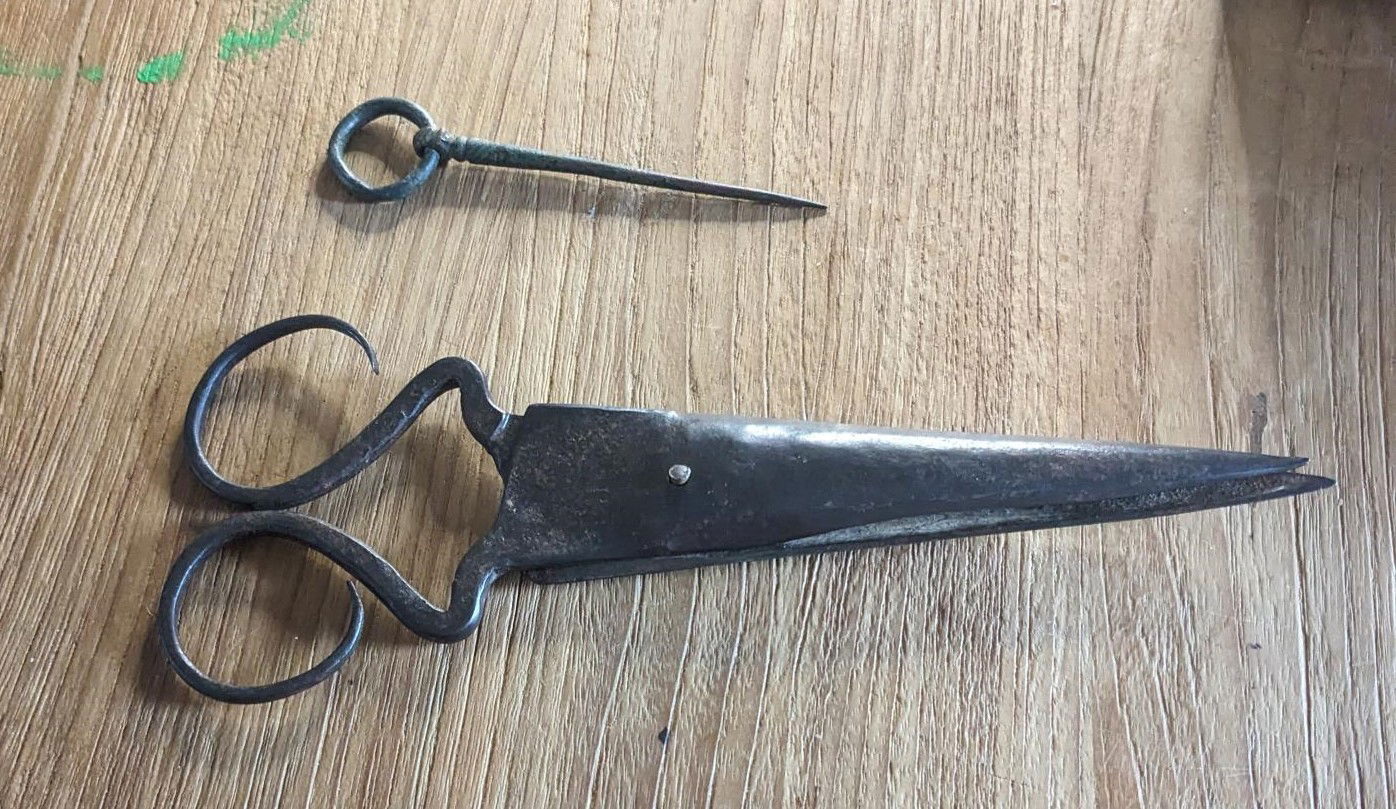
Shears and Witchpricker (or brodder) used to find witch marks on those accused in Pittenweem (Picture Jacqui Dempster)
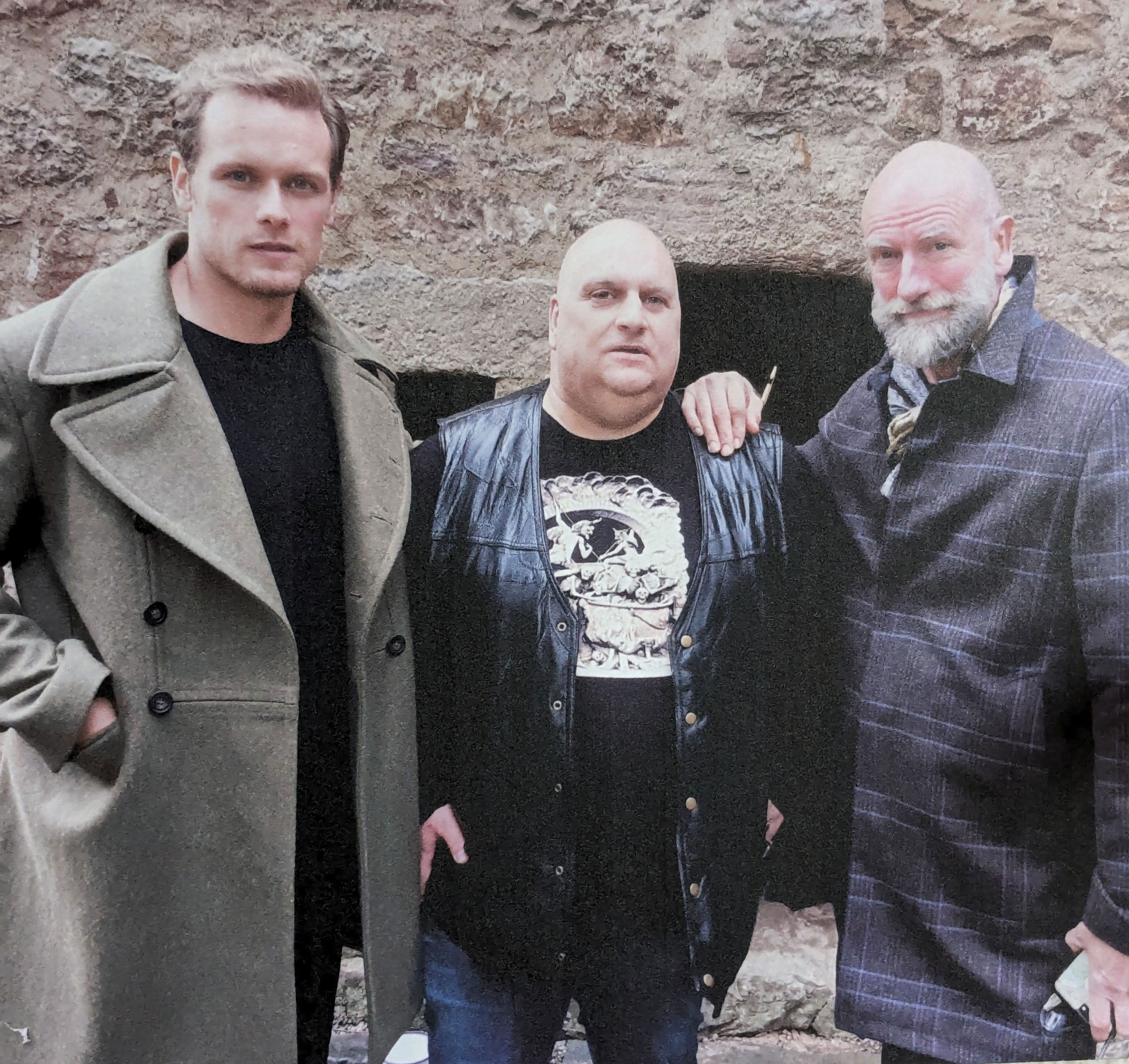
Leonard Low with Sam Heughan and Graeme McTavish on the show, "Men in Kilts." (Courtesy Leonard Low)
Pardons, Memorial Service and Commemoration of Victims in Scotland
It took me three years to fully research and write my children’s ghost adventure book which re-tells the story of the Witches of Pittenweem for a younger audience. In the year of its publication there has been an astonishing revival in interest about Scottish witches generally. On the last International Women’s Day Nicola Sturgeon formally apologised to those persecuted, and in February this year, campaigners called for dormant proposals for legislation posthumously pardoning witches in Scotland to be resurrected by a Member of the Scottish Parliament. A Private Member’s Bill was introduced by Natalie Don in 2022 but had to be withdrawn when she was appointed a minister (and thereby could not promote a Private Member’s Bill).
A plaque remembering dozens of people accused of witchcraft was unveiled in Forfar, however, campaigners not only want to see the legislative pardon implemented, but also seek a memorial to remember the 4,000 accused and 2,500 convicted witches in Scotland.
On 4th June 2024, the day when the Scottish Witchcraft Act 1563 commenced, creating the death penalty for offences, a Memorial Ceremony was conducted in Dunfermline Abbey, organised by Creative Coven and the charity, Remembering the Accused Witches of Scotland (RAWS). During the ceremony there was a simultaneous reading of the 4000 names of those accused by eight name bearers, significantly, on hallowed ground. Indeed, it is RAWS members who are actively seeking to create a national monument to those thousands of people and educate young people about the true story of Scotland’s witches. Just recently, actress Suranne Jones presented her take on “Investigating Witch Trials” on Channel 4.
The commemoration doesn’t end here, however. Dunfermline and Carnegie Library and Art Gallery is planning further events dedicated to Scotland’s bewitching history in the autumn.
Only through history can we learn the lessons of the past and with the many creative ideas now taking on new life and the passionate advocates like Leonard Low and organisations such as RAWS, the memory of Scotland’s Witches will never die.
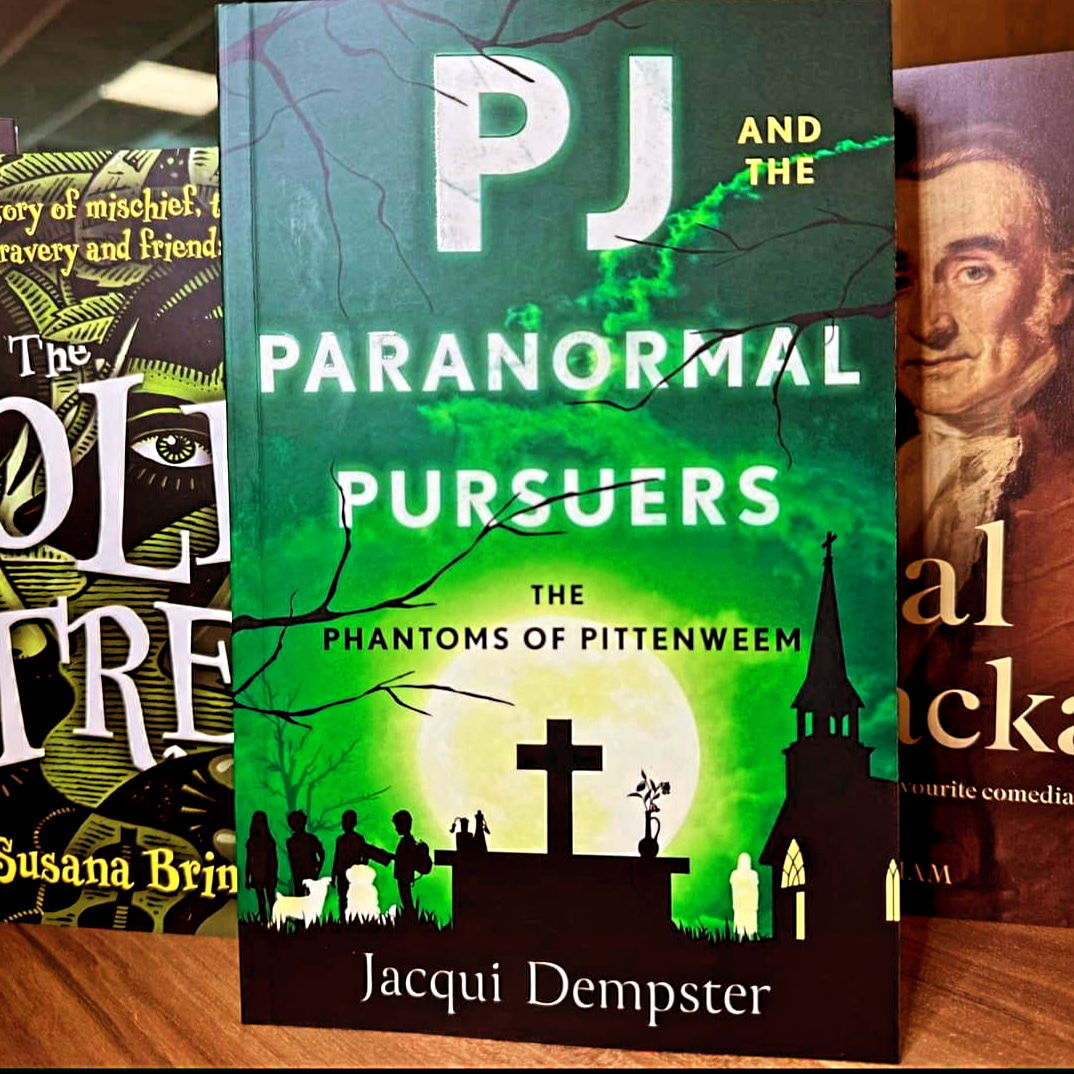
Jacqui Dempster is the author of PJ and the Paranormal Pursuers – The Phantoms of Pittenweem – The Book Guild Ltd, 28 April 2024. Price £8.99 and PJ and the Paranormal Pursuers – The Mackenzie Poltergeist (Suitable for middle grade readers aged 9-14).